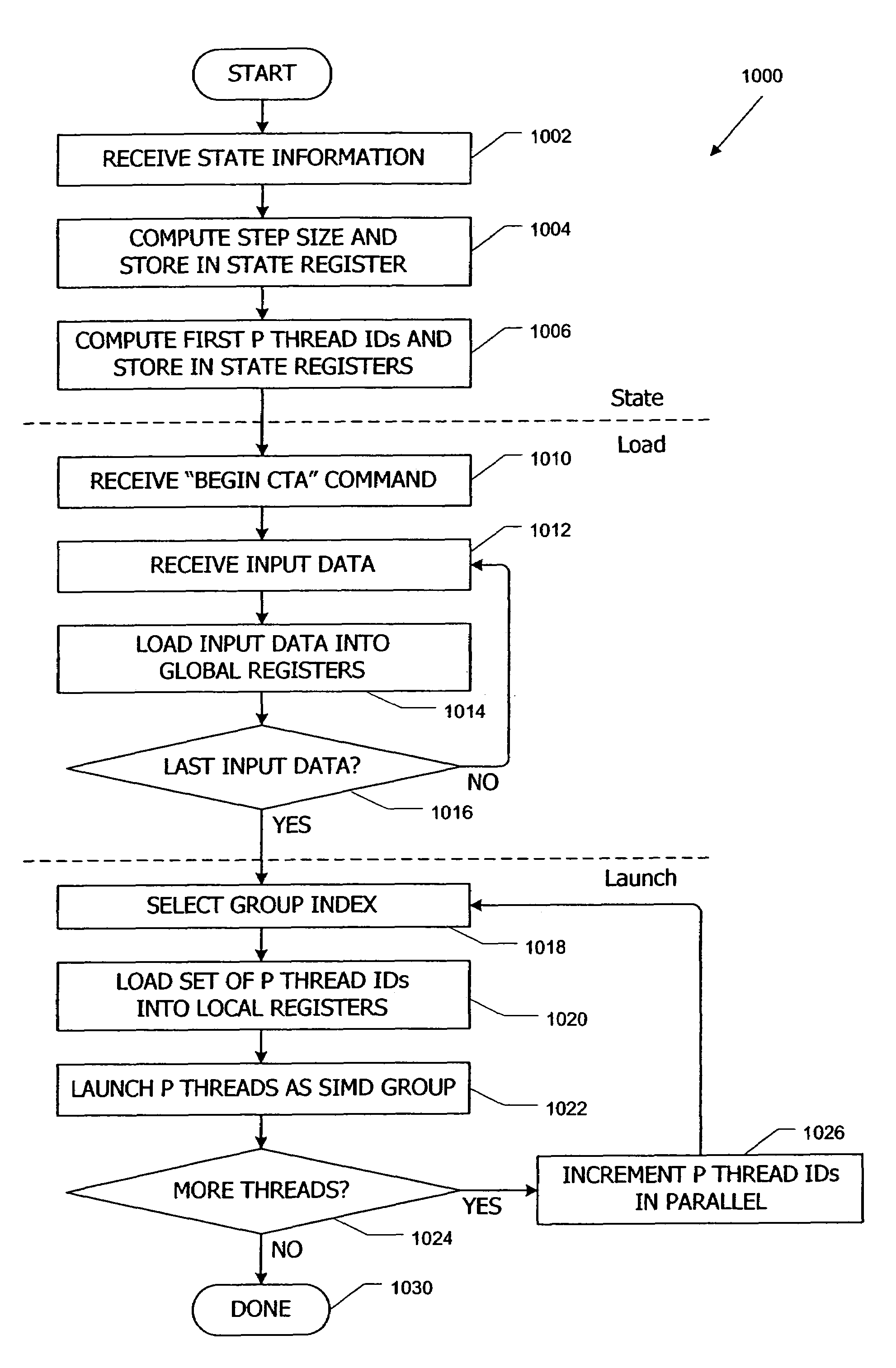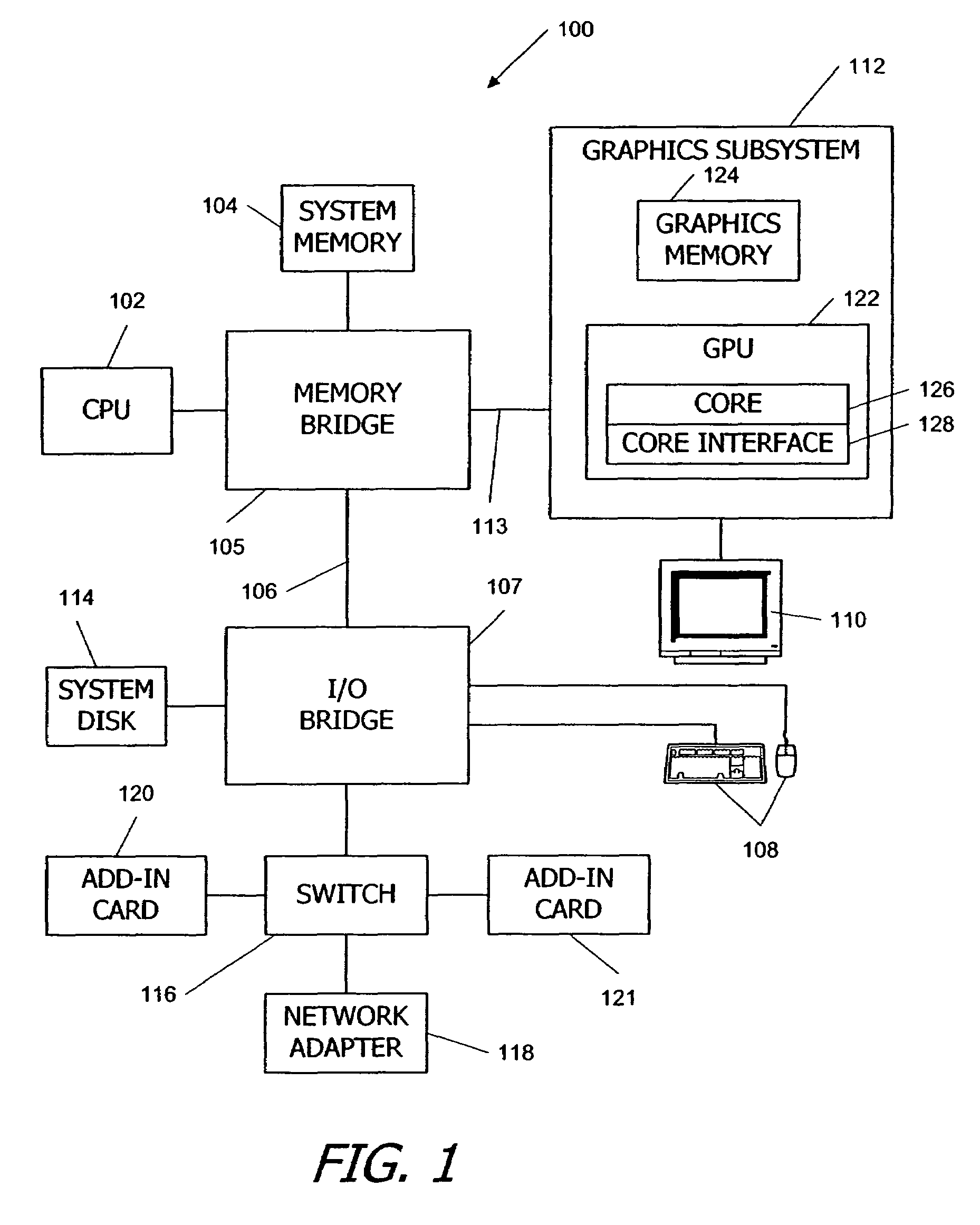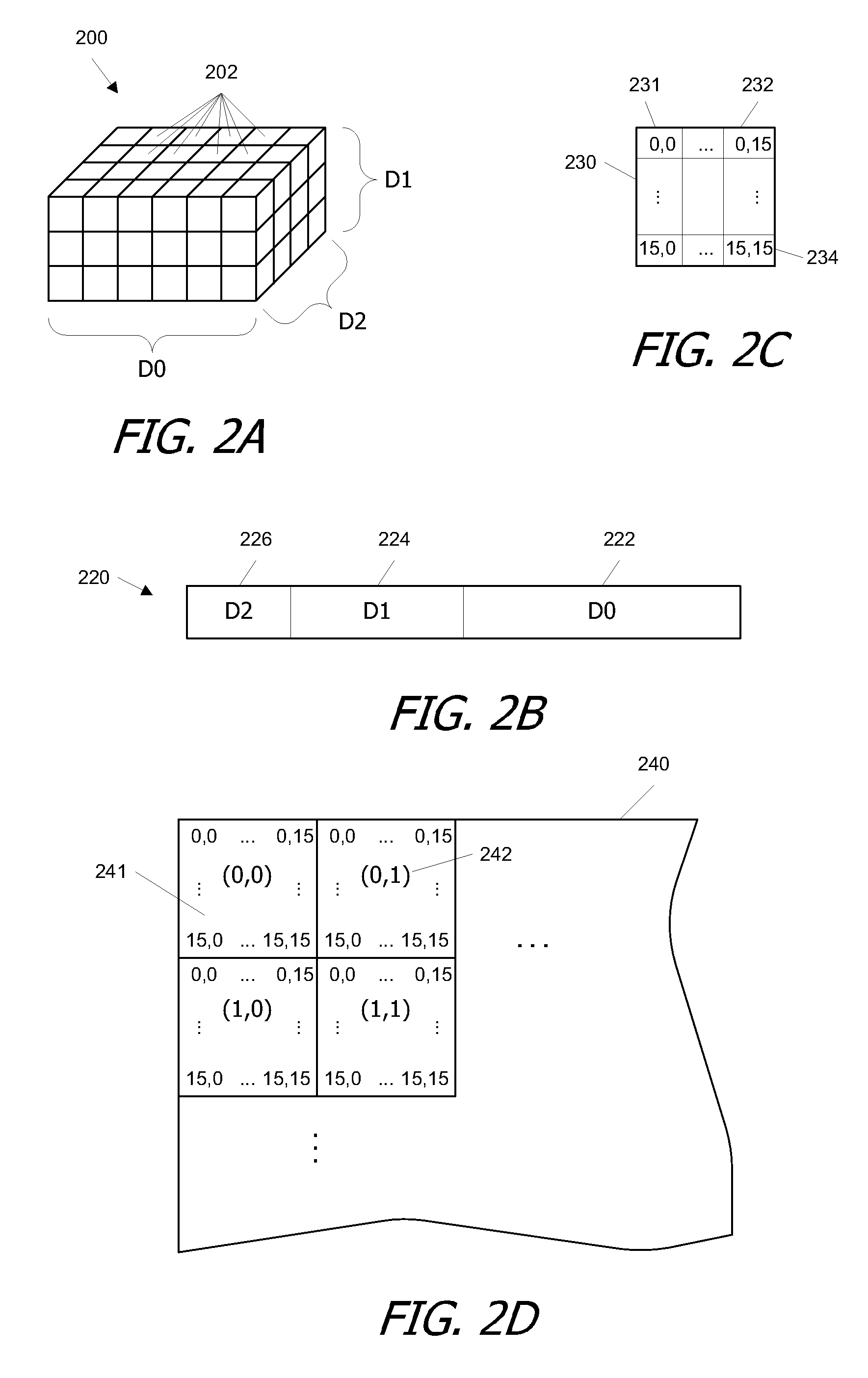Parallel data processing systems and methods using cooperative thread arrays and SIMD instruction issue
a data processing system and cooperative thread technology, applied in the field of parallel data processing, can solve the problems of limited data-sharing capacity, and achieve the effect of facilitating rapid launching of cta threads
- Summary
- Abstract
- Description
- Claims
- Application Information
AI Technical Summary
Benefits of technology
Problems solved by technology
Method used
Image
Examples
Embodiment Construction
[0036]Embodiments of the present invention provide data processing systems and methods that use cooperative thread arrays (CTAs) to perform computations. As used herein, a “cooperative thread array,” or “CTA,” is a group of multiple threads that concurrently execute the same program on an input data set to produce an output data set. Each thread in a CTA has a unique identifier (thread ID) assigned at thread launch time that controls various aspects of the thread's processing behavior. For instance, a thread ID may be used to determine which portion of the input data set a thread is to process, to identify one or more other threads with which a given thread is to share an intermediate result, and / or to determine which portion of the output data set the thread is to compute or write. Thread IDs are advantageously generated for groups of threads in parallel to facilitate rapid launching of the CTA threads.
[0037]CTAs can be executed in a variety of processing architectures, including a...
PUM
 Login to View More
Login to View More Abstract
Description
Claims
Application Information
 Login to View More
Login to View More - R&D
- Intellectual Property
- Life Sciences
- Materials
- Tech Scout
- Unparalleled Data Quality
- Higher Quality Content
- 60% Fewer Hallucinations
Browse by: Latest US Patents, China's latest patents, Technical Efficacy Thesaurus, Application Domain, Technology Topic, Popular Technical Reports.
© 2025 PatSnap. All rights reserved.Legal|Privacy policy|Modern Slavery Act Transparency Statement|Sitemap|About US| Contact US: help@patsnap.com



